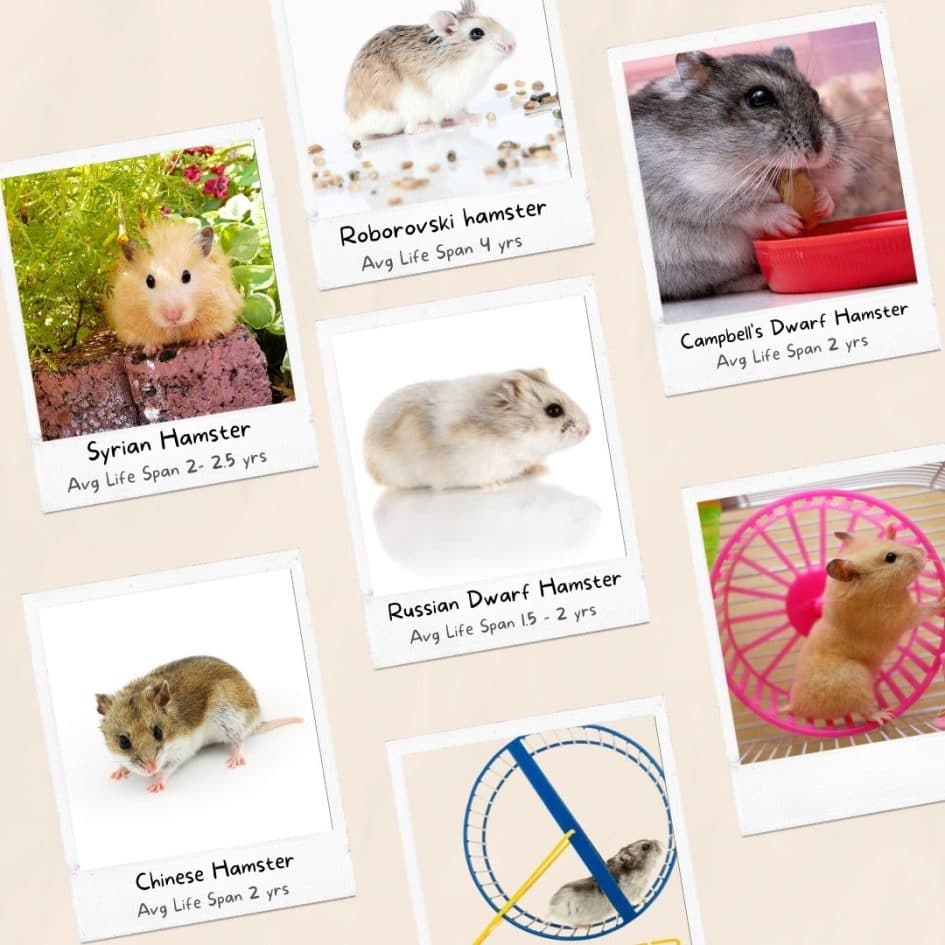

Hamster Lifespan: How Long do Hamsters Live?
According to the ASPCA, the average hamster lifespan is between 2 and 3 years. However, proper care can help your hamster live longer than that—but only if you give them that care in the first place!
Hamsters typically have a lifespan of about 2 to 3 years, but in some cases, they can live up to 3 years, and in others, they only live about half of that time. The average lifespan of hamsters also varies from breed to breed and depends on how well they’re cared for by their owners. So if you want to know how to help your hamster live longer, you’ve come to the right place! We’ve compiled a guide that covers the average lifespan, preventing death caused by common causes and essential care to help you make them live longer.
1. How Long Do Hamsters Live?
Hamsters typically have a lifespan of about 2 to 3 years. However, this is the average hamster lifespan. While in some cases, hamsters outlive 3 years, in others, they barely even make it till a year. The average lifespan of a hamster also varies from breed to breed. Chinese Dwarf hamsters have the shortest lifespan of under 2 years, whereas the Roborovski Dwarf has the longest lifespan as it lives up to 4 years. There are also certain hamsters like the Syrian hammies that for 5 to 6 years in captivity, but in general, have a lower lifespan.
2. How Long Do Hamsters Live Depending On Their Species?
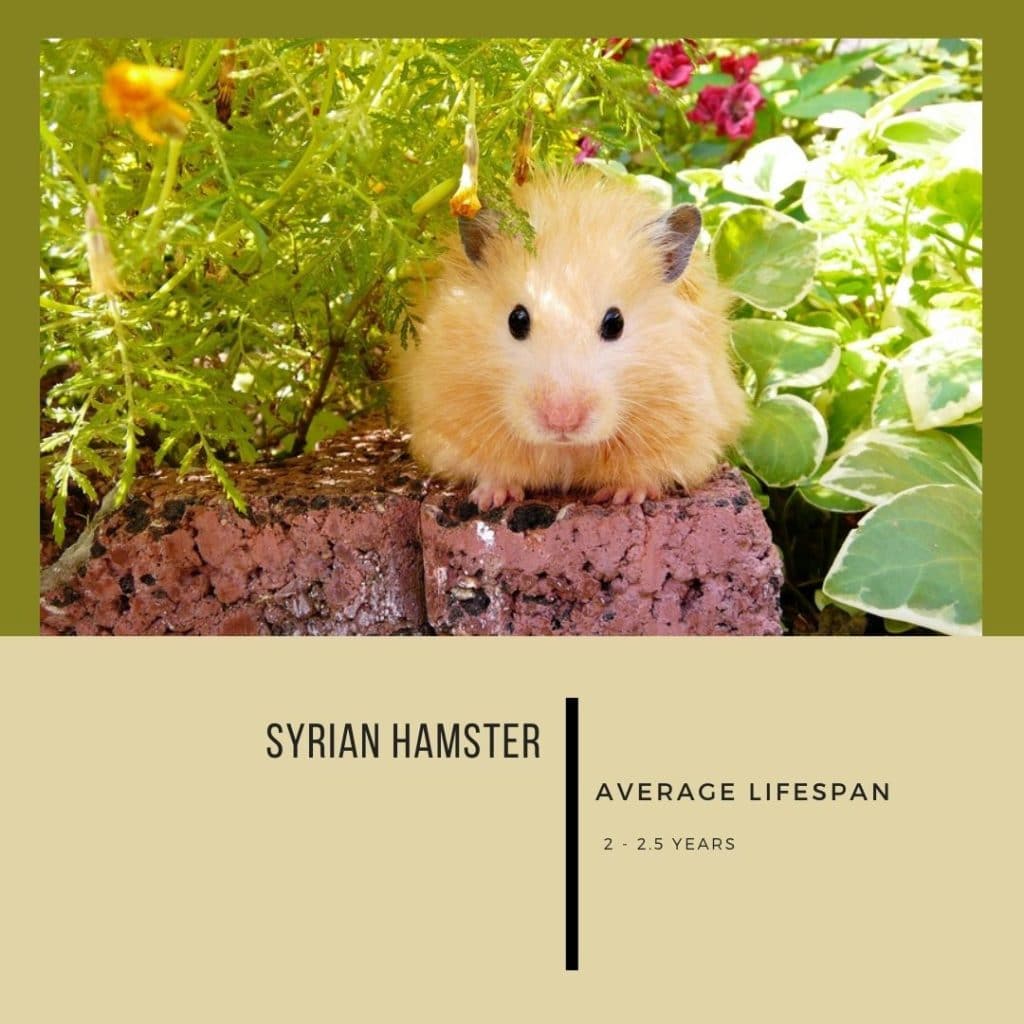
Since we’ve already covered the hamster species with the longest and shortest lifespan, you’re probably wondering about the other hamster species. On average, a hamster lives for around 2.5 years, but its lifespan varies from species to species, ranging from 1.5 to 3.5 years.
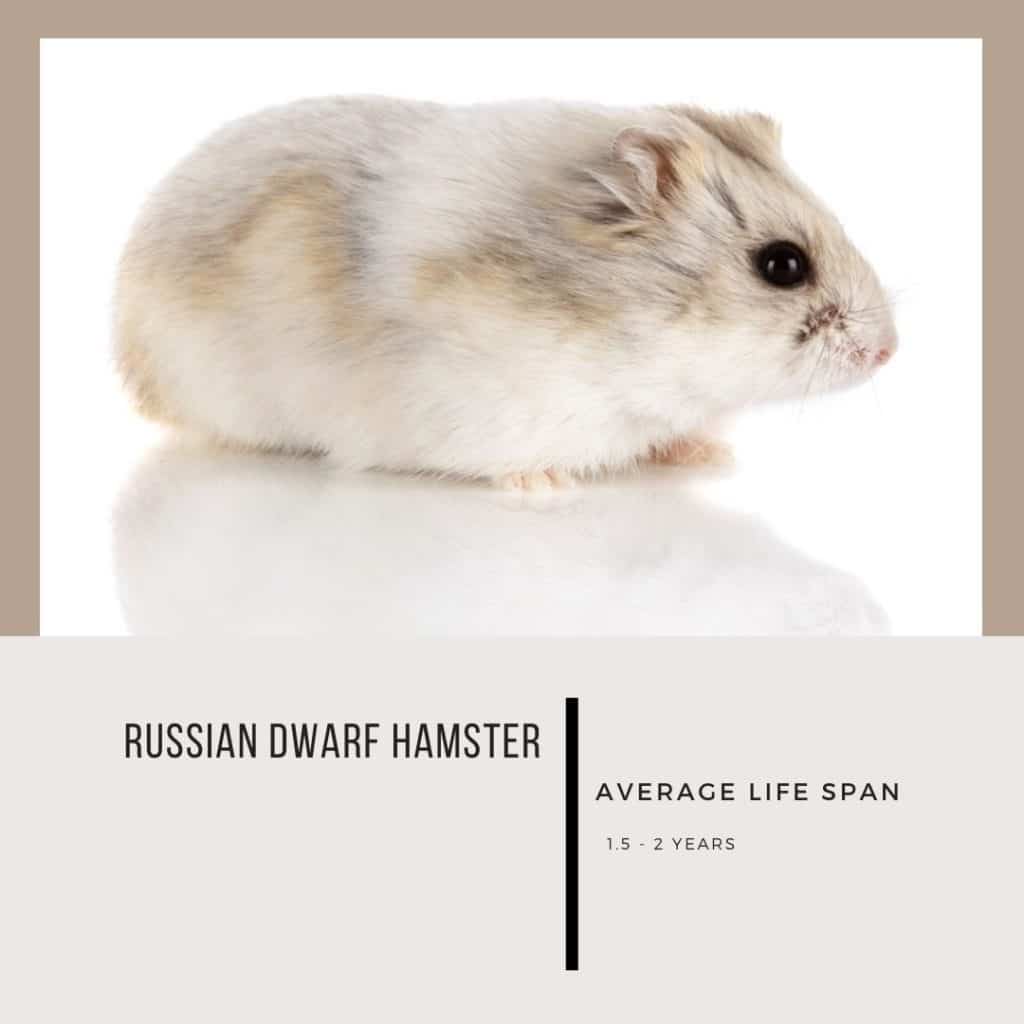
Here are the average lifespans of the most popular species of hamsters:
- Russian Dwarf Hamster: 1.5 – 2 years
- Campbell’s Dwarf Hamster: 2 years
- Syrian Hamster: 2 – 2.5 years
- Chinese Hamster: 2 years
- Roborovski Hamster: 4 years

These are just the average lifespan of the different hamster species. It is definitely possible for a Syrian hamster to only like for a year or for a Dwarf hamster to live for 3 years. However, the above lifespan average should give you a general idea of what you should expect when choosing the type of hamster to keep.
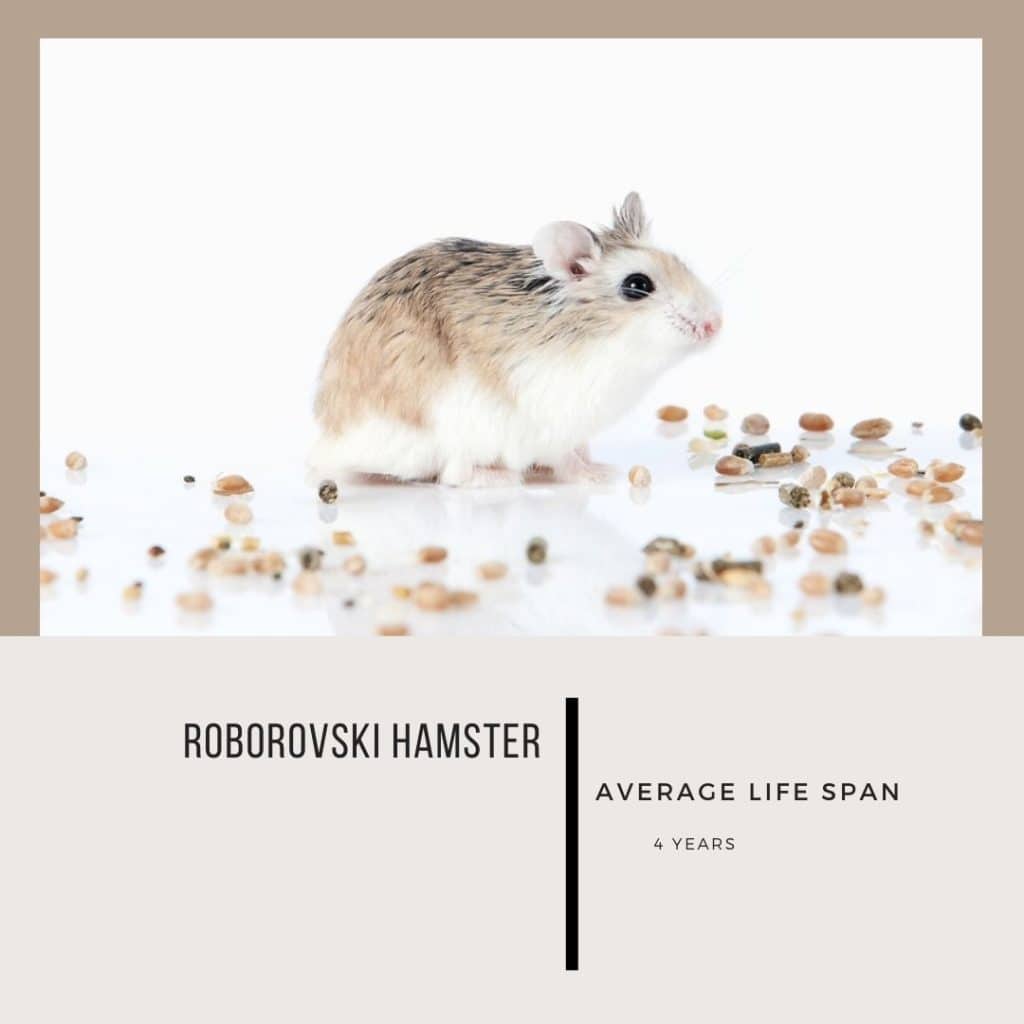
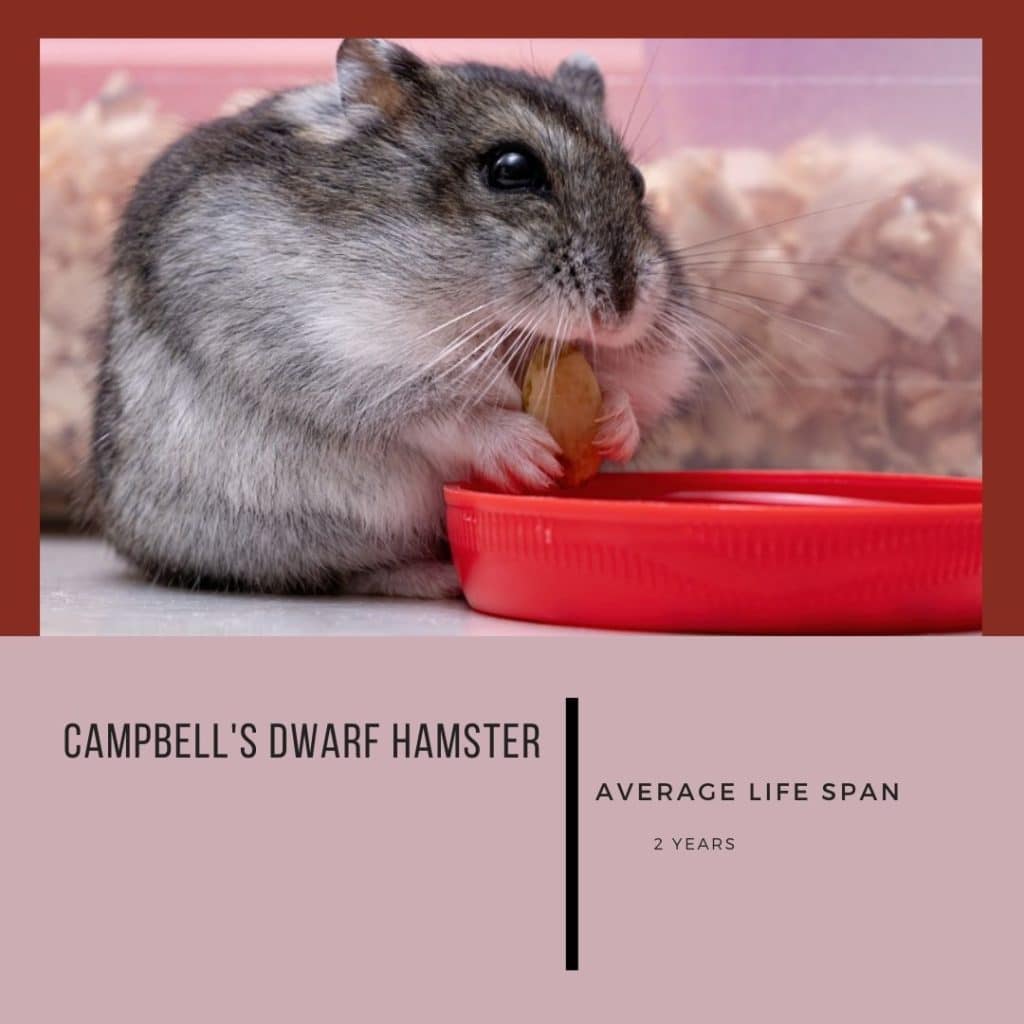
3. What Are The Most Common Causes Of Death Among Hamsters?
Mites or Lice in Hamster Ears or Their Cage. Because they are tiny creatures, hamsters are susceptible to disease and illness.
Although they are small creatures, you must use only hamster-friendly bedding, food bowls, and water bottles made of stainless steel or glass when it comes to breeding them. Hamsters can easily chew other materials, so if you leave the plastic in their cage, you run a high risk of them ingesting these potentially harmful materials. This can result in severe illness or death for your pet, so always check any new equipment before introducing it into your pet’s home.
If your hamster has an ear infection, make sure to look out for him, scratching at his ears excessively, shaking his head frequently, or having difficulty moving around with his usual agility. If you notice any of these signs, immediately see your vet, who will prescribe medication to cure whatever sicknesses he might have contracted.
4. The Lifespan of Hamsters: What affects it?
There are many factors that affect the lifespan of a hamster. While some factors are inherited, such as faulty genetic or predisposition to an illness, other factors are controllable such as their diet, exercise, and the overall care they receive. Therefore, we’ve divided the factors into two categories to give you a better idea of what you can do to improve your hamster’s lifespan and ensure that it lives comfortably.
4.1 Hamster Lifespan Factors You Can’t Control

Here are some inherited traits that impact your hamster’s lifespan and are beyond your control.
4.1.1 Breed of a Hamster
You have the option to choose your hamster’s breed. If you have good knowledge about which hamster breed has the longest average lifespan, it can be easier for you to decide. While there are five species to choose from, not all pet stores carry all five breeds. So the choice mostly boils down between a Syrian hammie and one of the Dwarf types. Syrian hamsters are mostly the popular choice because not only are they the largest hamster breed, but they are also the most common to find.
4.1.2 Genes and Other Inherited Traits
Despite where you get your hamster from, its inherited traits are beyond your control. You may buy your hamster from a pet shop, but you can never know for sure where the pet shop got your hamster from. Some breeders aim for a variation in size or coat colors that come with certain genes, which aren’t well-documented with hamsters. You can never know for sure if your black Syrian hamster came with a gene that has weakened its kidneys, shortening its lifespan.
4.2 Hamster Lifespan Factors You Can Control
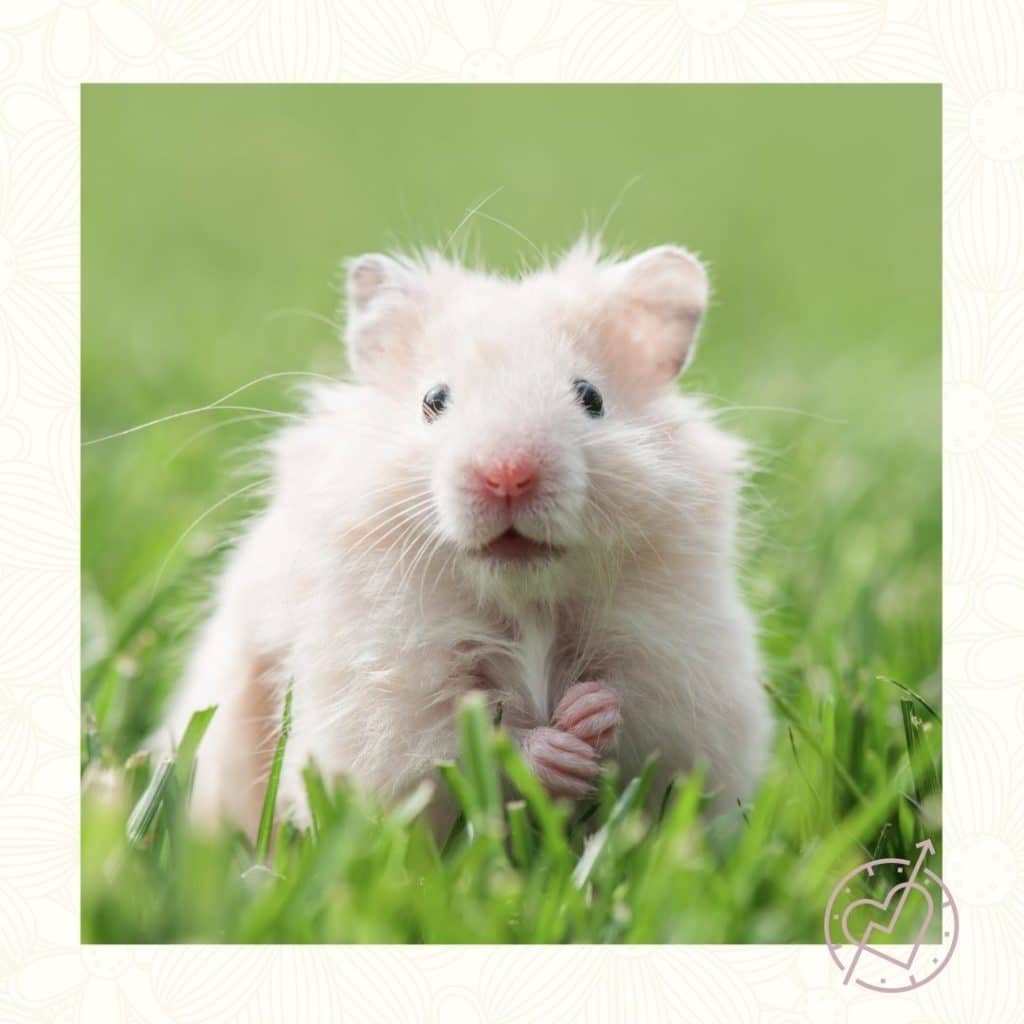
There are a some factors that you can control to give your hamster a comfortable and happy life. Optimizing these factors and making the right decisions will increase the chances of your hamster live longer for a few more days or months. As a responsible owner, you’ll want to follow these simple tips so that your hamster lives a healthy life and doesn’t suffer from complications due to neglect. Here are 13 ways you can ensure your pet hamster has a long and happy life
4.2.1 Provide a Hamster Habitat
First and foremost, provide your pet with a big enough habitat for it to exercise and play in comfort while still having room to burrow and explore. It should be at least 30 inches long by 12 inches wide by 12 inches high—or bigger if you have multiple hamsters—and should have a platform for sleeping and an exercise wheel so your hamster can stay fit and trim.
4.2.2 Give Your Hamster Plenty of Hiding Places
Keeping your hamster happy means giving them plenty of hiding places to retreat into when they feel threatened. Make sure there are places all over the cage where they feel safe—nooks, crannies, tunnels—so they’ll want to spend more time exploring their world rather than cowering in fear.
There are minimum cage size requirements for different hamster breeds. For instance, a Syrian hamster requires a cage around 24 x 12 inches with a height of 12 inches. In most cases, it is preferable to have a cage even more significant than the above measurements. Since hamsters do climb, it’s best to provide them with a multi-level cage.
When it comes to cleanliness, hamsters are relatively clean animals that don’t smell. So it would help if you kept their cage as clean as possible by changing their bedding once a week and getting rid of any dirt or dust. Hamsters also require a pee corner in the cage. So you will have to ensure that you make its pee corner far away from its hideout spot.
4.2.3 Feed Them What’s Right for Their Diet
You don’t need complicated formulas or concoctions when it comes to feeding your small furry friend; make sure they eat enough fruits, vegetables, and protein each day. An unbalanced diet can significantly affect a hamster’s health. Of course, hamsters love treats just as much as we do, but snacks should only make up 10% of their total daily food intake. The best way to keep them nourished is through fresh veggies, nuts, seeds, and fruits — all good sources of vitamins A & C, folic acid, and calcium. For example, it is best not to feed your hamster lettuce every day because it loses nutrition when exposed to air.
4.2.4 Provide Plenty of Toys
Try out different toys (available at most pet stores) on your new furry friend before selecting one toy per cage (make sure they’re chew-proof). Move toys around every few days because hamsters like something new to stimulate their minds
4.2.5 Make Sure Their Water Bottle Is Fresh
Change water bottles often since freshwater is essential to keeping your hamster healthy and happy.
4.2.6 Have a Vet Check Them Twice a Year
Take your pet twice a year for routine checkups to ensure health and wellness.
4.2.7 Pairing Your Hamster
You may have seen hamsters kept together. Even though this isn’t unusual, most time, keeping hamsters together isn’t the best idea. Hamsters are generally very territorial animals that prefer to live alone. When kept in pairs, they often get quite stressed, and one of them will start bullying the other. This has an impact on their overall wellbeing and lifespan.
4.2.8 Play With Your Pet Every Day
Your task is to give your beloved creature some constant attention throughout their life, which includes playing games with them using sticks and strings; experiment until you find what works best for both of you.
4.2.9 Don’t Share Your Home with Dogs or Cats
Exotic pets such as hamsters and reptiles should only share a home with other exotic pets—never with dogs or cats
4.2.10 Learn How to Groom Your Hamster
Regularly brushing and clipping your hamster’s nails will keep him healthy and prevent hairballs and worn nails. It would help if you groomed your hamster every six to eight weeks to avoid matting. This should also allow you to check for fleas or lice or any other problem areas that might need attention.
4.2.11 Set Up a Run-Around Area in Your Home
Put together a mini exercise area in your own home for your pet by providing it with wheels, swings, etc. to run around in so they can burn off energy; make sure you clean it up at least once a week
4.2.12 Do not handle your hamster right after you’ve given him exercise
Let your hamster rest after being active because exercise causes his heart rate to go up, making him more prone to becoming overheated. Allow him to cool down before trying to pick him up. Your hands should feel slightly warm against his backside — not hot! Hot hands will burn your hamster through his thick fur coat. Heatstroke can kill a hamster quickly, so avoid handling them until he has cooled down completely.
4.2.13 Bathe your hamster occasionally with plain water
But only do so during cooler months when he isn’t likely to catch a cold. You can give him baths during warmer weather, but try using tepid water instead since it won’t shock his system quite as much. Start bathing your hamster at about eight weeks old and try applying vet-recommended shampoo for pets — never use human shampoo, even if it is labeled safe for pets. The human shampoo has different pH levels than what is used on animals and may dry out his skin or irritate his eyes.
And finally, remember to love your pet for as long as you can. Remember that hamsters don’t live forever, and it’s a good idea to expect that their lifespans may only last for two or three years. By keeping them healthy and treating them well, however, you’ll be able to enjoy your furry friends longer — and you’ll probably find yourself missing them when they’re gone. A caring owner who provides their hamster with lots of exercise time outdoors in a secure area, proper nutrition, and grooming can significantly increase their life span — so stick with it! Good luck taking care of your tiny rodent friends!
5. The Bottom Line
Hamsters are adorable pets that look super cute on the running wheel in their cages. Just looking at these fluff balls makes your heart jump with joy. Although these creatures don’t have a very long lifespan, they still make great companions for as long as they are there!
Discover how to create a joyful, healthy home for your pet.
Subscribe to your weekly rundown of practice, real life ideas and training tips straight to your inbox.


